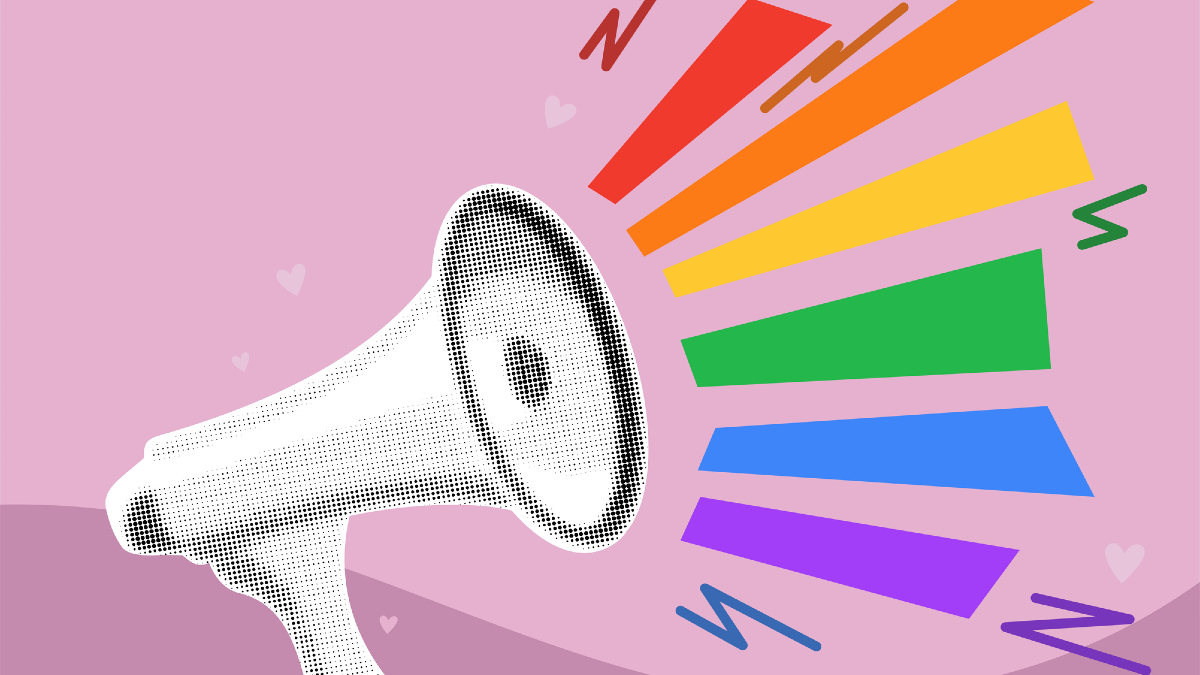Pride Month Began Earlier Than You Think

June is Pride, a month of celebrating, honoring, and advocating for the LGBTQ+ community. Pride wasn’t formally recognized by the U.S. government until 1999, but the LGBTQ+ community and its allies have been celebrating Pride every June for decades.
Despite what some corporations and brands might have you believe, Pride isn’t a capitalist celebration—of course, that doesn’t stop Starbucks and Visa from rainbow-washing their company logos and spending on big ad campaigns every year in the hopes of enticing more customers through performative allyship. And while Pride has become more mainstream in recent years, it won’t surprise you to learn that that wasn’t always the case.
How did Pride Month start?
Pride Month really began on June 28, 1969 in New York City, when police raided the Stonewall Inn, a popular gay bar in the Greenwich Village neighborhood. The violent raid inspired a sustained response from the LGBTQ+ community that gave way to the gay liberation movement, and though there is still some debate over who “threw the first brick” at the police, everyone agrees that we have three queer women of color—and specifically transgender women of color—to thank: Marsha P. Johnson, a Black transgender woman who was celebrating her 25th birthday (Johnson later said she didn’t show up at Stonewall until the riots were already underway); Sylvia Rivera, a drag queen and activist who went on to co-found S.T.A.R. (Street Transvestite Action Revolutionaries), a program to help unhoused LGBTQ+ teens, with Johnson; and Stormé DeLarverie, a drag performer and activist who would later say of the uprising, “It was a rebellion, it was an uprising, it was a civil rights disobedience—it wasn’t no damn riot.”
The first Pride parades and marches took place the following June, in 1970, with multiple cities across the U.S. participating, including Chicago, San Francisco, and Los Angeles. In New York, members of the LGBTQ+ community and allies celebrated “Christopher Street Liberation Day,” and these early marches became pivotal in gathering early support for LGBTQ+ rights.
Unfortunately, queer and trans women of color were erased from the narrative early on and often excluded or ignored at Pride events. It’s not just that queer and trans women of color started the revolutionary uprising at Stonewall—they were and continue to be disproportionately affected by anti-LGBTQ+ violence, making their erasure from the movement even more egregious.
When was Pride Month officially recognized?
In 1999, President Bill Clinton declared “the anniversary of [the] Stonewall [riots] every June in America as Gay and Lesbian Pride Month,” notably omitting a large portion of the LGBTQ+ community. 12 years later, in 2011, President Barack Obama expanded the government’s official Pride designation to include the entire LGBTQ+ community—which, at the time, was still being referred to in mainstream media as “LGBT.”
Despite the U.S. government’s reticence to fully embrace and recognize Pride, members of the LGBTQ+ community and their allies have been celebrating Pride in June all over the world for decades. If you’d like to learn more about how to celebrate Pride and what you can do to advocate for the LGBTQ+ community, local outreach and advocacy organizations are a great place to start. You can also check out GLAAD’s list of resources to find relevant organizations supporting LGBTQ+ rights across the country.
Have a tip we should know? tips@themarysue.com